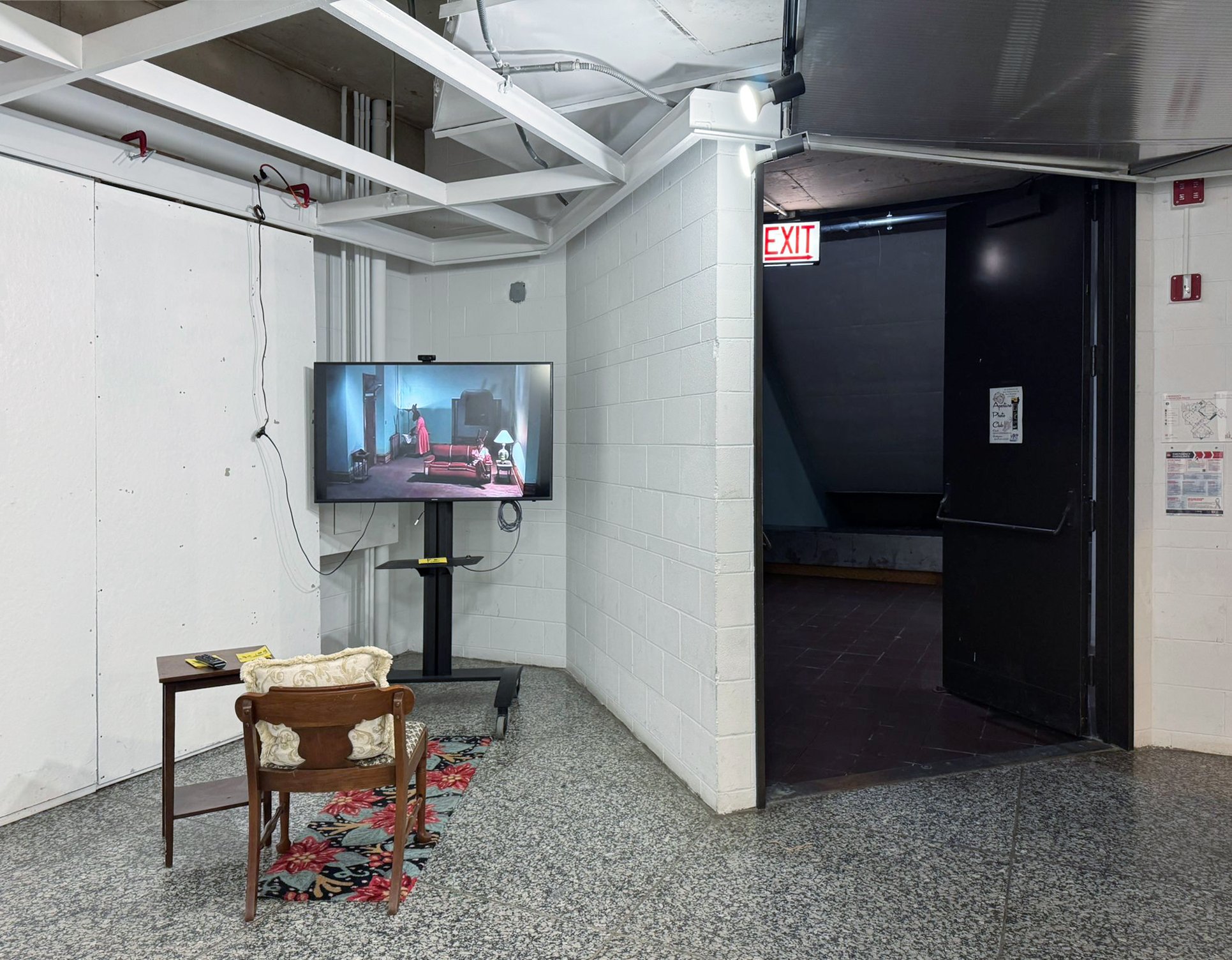RABBIT IS THE NEW BEEF
Video installation of Rabbits (2002) dir. David Lynch. On view at the University of Illinois at Chicago Art and Architecture Building, RM1100, Sunday, Feb 2, 2025 - Sunday Feb 9, 2025. Winter 2025.
“Rabbit is the new beef... Because we abhor the utilitarian, we have condemned ourselves to a lifelong immersion in the arbitrary”
Rem Koolhaas, Junkspace, 2001
Over a week, one fifty-second of a year, there are 168 hours. During the sixth week of 2025, Rabbit is the New Beef, a video installation continuously screening the entirety of the late David Lynch’s RABBITS (2002), broadcasted the short film approximately 202 times (with a 50-minute runtime) consecutively.
The film consists of nine (9) scenes featuring three (3) rabbit-headed-human-figures in a single (seemingly living) room. The stationary camera is positioned (presumably) where a television is, inciting a tension between two sets of audiences; treating the viewer as if they are present in a live studio audience. The three characters, Jack (Scott Coffey), Jane (Rebekah Del Rio and Laura Harring), and Suzie (Naomi Watts), dressed as rabbits, speak strictly in non-sequiturs, producing an eerie sense of disorientation and elusivity. Each spoken sentence is unfinished and disconnected. Characters talk past and through each other. In this way, any form of resolution or understanding is difficult (and possibly impossible) to gain.
If, for Koolhaas, Junkspace is the sum total of our fetish for modernization, our obsession with intelligence, and our desire for instantaneity, RABBITS presented in this way, looping continuously for nearly 2% of a Gregorian year, itself becomes Junkspace—a bastardized cinematic experience. Here, in a forgotten nook of a busy architecture school, a lonely chair for an audience of one, individualizes the act of viewing a film. The standalone chair is accompanied by a floral runner and a wooden end table—an extension of Lynch’s singular and enclosed interior. Upon the end table are printed scripts of each scene, only a page long. Presented in pamphlet-form, it becomes quicker (and easier) to read the nine cards than to watch the 50-minute film—inverting our contemporary relationship to media by expediting the experience, not through moving images (cheap and lazy consumption), rather, here, the slow and (traditionally) laborious act of reading streamlines a viewer’s total consumption of RABBITS.
This installation of RABBITS is “additive, layered and lightweight, not articulated in different parts but subdivided…(it) cannot be remembered. It is flamboyant yet unmemorable, like a screensaver; its refusal to freeze ensures instant amnesia…like a reptile sheds skin, is reborn every Monday morning…(it is) endless, it is never closed…”
Scripts for Scenes 1-9
Each scene’s script was placed into a reader offering the choice to read its dialogue within minutes or watch the film in its entirety—inverting our contemporary relationship with media. In this case one (reading) is more expedient, but the other (watching) is more fulfilling. Both are valid versions of the work.





